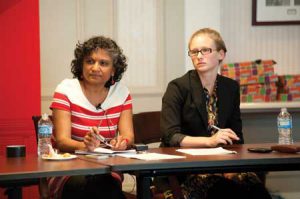
Video spurs engagement in a connected world
By Katherine Gombay
Talk about going viral. When three former film students posted a video about Joseph Kony, the brutal Ugandan guerrilla leader, in early March, they were hoping to get attention and donations for their campaign against the war criminal. Within a couple of days, millions of people had watched the video made by the group Invisible Children and mainstream papers were writing about the phenomenon. And by now, just over two weeks later, the 30-minute film has had over 85 million hits and even 10-year-olds on the street are talking about Kony 2012.
But along with all the attention, there has also been lots of criticism of the video, from both Africans and Westerners. Critics point to the melodramatic presentation, the condescending tone, the image of whites as “saviours” and significant inaccuracies, the most important being that for close to a decade, Kony and his Lord’s Republican Army (LRA) have been comprised of just a few hundred soldiers and not the tens of thousands of abducted child soldiers the video depicts. The LRA operates mainly out of the Democratic Republic of the Congo and not Uganda.
The reality of the current situation is quite different from what the video depicts – something Ugandan journalists have been quick to point out, also on YouTube. Indeed, the criticisms have been so widespread and extreme that Jason Russell, one of the filmmakers, has been hospitalized after suffering a psychotic breakdown apparently caused by stress and exhaustion from the situation.
For anyone working in human rights and international development, Kony 2012 serves as something of a flashpoint for debate about the role of activism and international non-governmental agencies. That’s why Law student Siena Anstis and Prof. Nandini Ramanujam, the Executive Director of the Centre for Human Rights and Legal Pluralism at McGill’s Faculty of Law, organized a discussion around it earlier last week. “I was concerned that all the criticisms of the video would discourage students interested in engaging with human-rights issues at home and abroad,” explains Ramanujam. “I think it is a good time to get young human-rights professionals talking about the role of advocacy and activism in a global, highly-connected world.”
Participation in the discussion was capped at 25 people and the room was full of students who were almost universally dismissive of the melodramatic and manipulative tone of the video, along with its inaccuracies.
At the same time, there were those who pointed out that although the video was biased, it also raised awareness and interest in a place and situation that had been almost invisible, and that there were important distinctions between education and awareness in the context of international action.
Payam Akhavan, of the Faculty of Law, summed up his sense of what prompted the video to go viral. “Maybe it’s because we in the West are looking for meaning that we can see in the daily struggles of other societies,” he said.
But he added that it was worrying to see humanitarianism reduced to 10 seconds and a Paypal account. These disturbing discussions about agency, activism and international responsibility will no doubt continue, perhaps most importantly, online. As Kony 2012 makes clear, social media and the web are now one of the prime sites for international engagement.
